As Tesla's Autopilot Melts Down, GM's Cautious Super Cruise Looks to Win Out
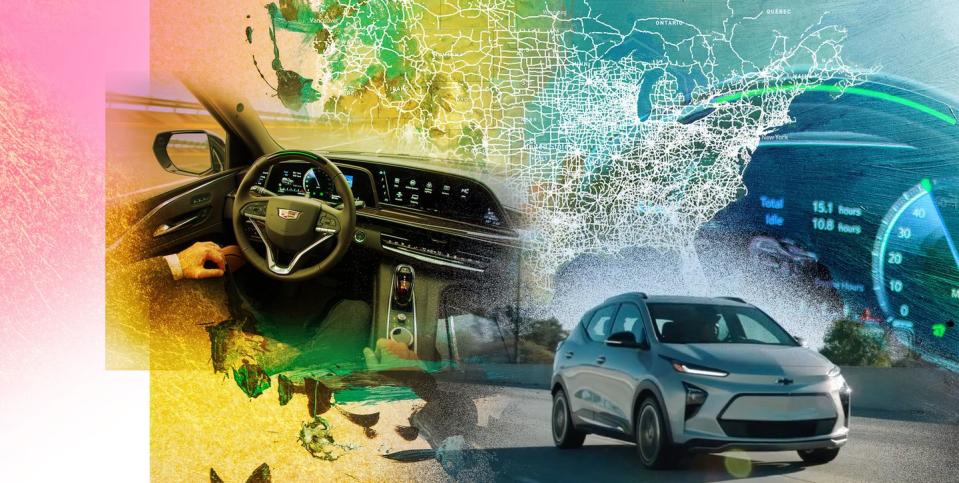
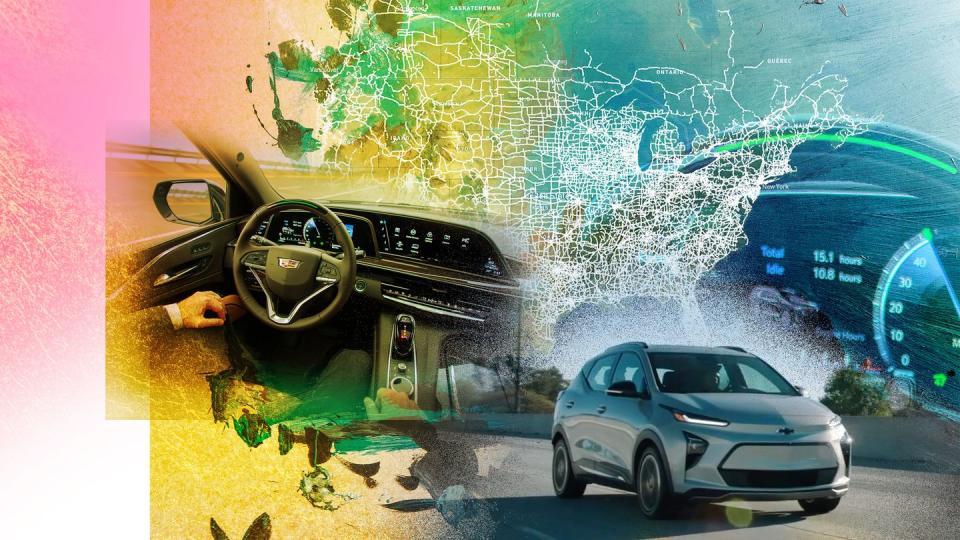
I just logged hundreds of mellow miles in a GMC Sierra Denali equipped with Super Cruise, convinced more than ever that GM’s hands-free driving tech is unsurpassed. How the worm has turned: While I was capital-C Cruising in New England, watching the Sierra pull off fully automated passes and lane changes with panache, Tesla was being spanked and sued by a California regulator for years of bad faith and broken promises over its Autopilot. The Cliff Notes version: Teslas still can’t drive themselves without human oversight. And I agree with experts who believe they never will (in current form), and certainly not safely, because of fundamental flaws in Autopilot’s design and philosophy.
Those flaws, and GM’s divergent approach — call it humanism versus hubris — trace to the origins of both systems. Beginning in 2014, Elon Musk defied a near-consensus among technologists in autonomy. Musk insisted cameras alone could create a fully self-driving car, thanks to near-magical software and reams of shared data from owners. Along with scoffing at redundant sensors, Musk rejected the need for a driver-monitoring system, despite growing evidence that keeping humans in the loop would be essential for safety. Keen for first-mover advantage, Musk pushed employees to make his vision a reality, despite deep misgivings from engineers who saw the literal blind spots. In October 2015, Tesla began equipping the Model S with Autopilot hardware. The next October, software was switched on to enable automated cruising, braking and lane keeping.
We know what happened next. The world was dazzled, if not bamboozled, by Musk’s increasingly bold promises of “full self-driving.” Shortly after its debut, Musk told reporters that Autopilot is “probably better” than a human driver. Within two years, he promised, owners would summon Teslas from across the country. Robotaxi Teslas would earn owners money as they slept. A credulous, slavering media seized on Autopilot as further evidence of Tesla’s insurmountable tech lead. Like the mythical flying car, we’d all soon be driving autonomous cars, and riding in sci-fi taxis with no garrulous dude up front. Roadway deaths and injuries would plummet. Seniors and the disabled would gain miraculous freedom. Parents would rest easy as their offspring attended proms and parties.
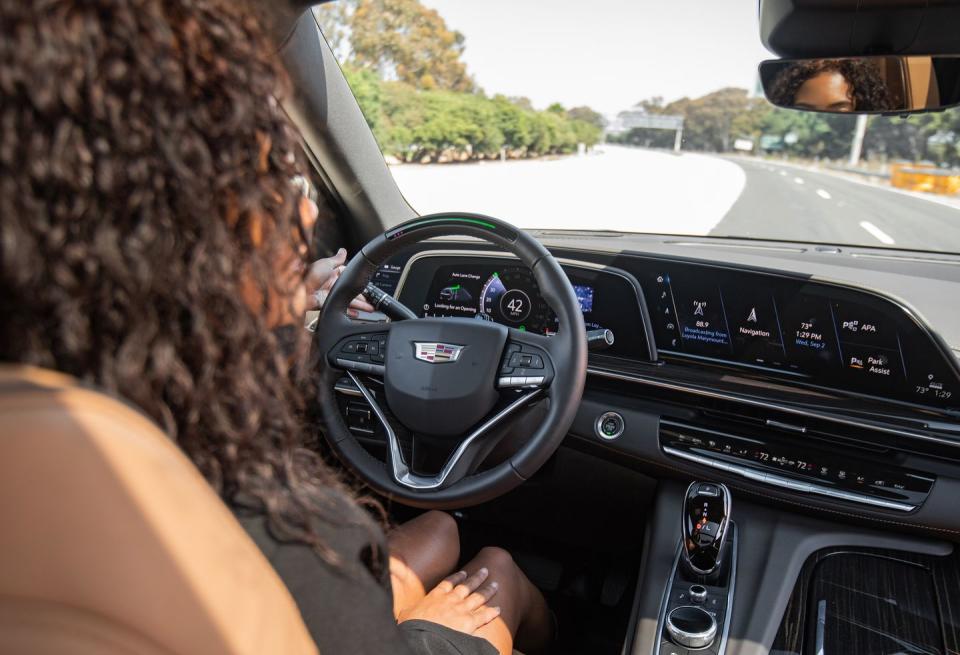
Automakers are still spending billions of dollars to crack the code of self-driving, yet today that optimism seems quaint. We’ve gone from can-do heights to the “trough of disillusionment,” as Gill Pratt, the DARPA Challenge pioneer and now Toyota’s autonomy guru, told me in an interview.
I’ll argue the root of that disillusionment traces directly to Tesla and Musk, who continues to overpromise and underdeliver on self-driving while letting his beta-testing customers sort out any mess — for a price of course. Surveys suggest the public mood has begun to sour over driverless cars: Pew Research found 44 percent of adults now view widespread use of autonomous cars as a bad idea for society, versus 26 percent who find it a good idea. (Men remain far more likely to want to ride in a robo-car than women, at 46 percent versus 27 percent).
GM, along with other legacy automakers, knows it can’t get away with Silicon Valley’s “breaking things” ethos, not without shedding billions of dollars in lawsuits or having cars recalled en masse. Fortunately, its driver-assistance tech — with zero claims to “autonomy” or “self-driving” — works as advertised.
That may be the best thing about Super Cruise, and a potentially revolutionary offshoot coming next year: They can make us remember when self-driving cars seemed like a great idea.
GM began working on the problem in suburban Detroit in 2013. Popular Mechanics honored the announced “Super Cruise” that fall. But in a familiar, sometimes frustrating pattern, it took GM four years to bring the tech to showrooms in the Cadillac CT6. GM had introduced plenty of innovative tech, often with great fanfare, yet its record of popularizing it had been dismal: The EV1, hydrogen fuel cells, Quadrasteer, Chevy Volt. Tesla’s vaunted Autopilot had beaten GM to market. Would Super Cruise be next in GM’s line of fizzles or failures? The pressure was on. Yet the tech’s creators, including then-Chief Engineer Jason Ditman and Mario Maiorana, stuck to first principles.
“The number-one thing was doing it responsibly, providing value to customers, but not at the expense of safety,” says Maiorana, now Super Cruise chief. One non-negotiable was an infrared camera to monitor facial position and eyes, ensuring a driver watches the road and can quickly retake control.
“We knew we wanted to be hands free, but we knew we wanted that driver-attention camera. It was always front-and-center of our focus,” Maiorana says.
In hindsight, it seems obvious, that these new systems — faith-based and fallible — still require humans to be active wingmen, without lulling them into distraction or overconfidence. Onboard Lidar maps provide another layer of vision and safety redundancy, geofenced to ensure Super Cruise only operates (for now) on divided Interstates with those minutely detailed scenes. The system’s light bar on the upper steering wheel rim was another illuminated stroke of genius, as I was reminded on my Sierra test: Flashing green, blue or red in various situations, the light bar greatly improves on the dinky-or-confusing IP telltales in some competing systems.
“It’s such a great indicator, properly placed to give a driver no confusion over who’s in control,” Maiorana says.
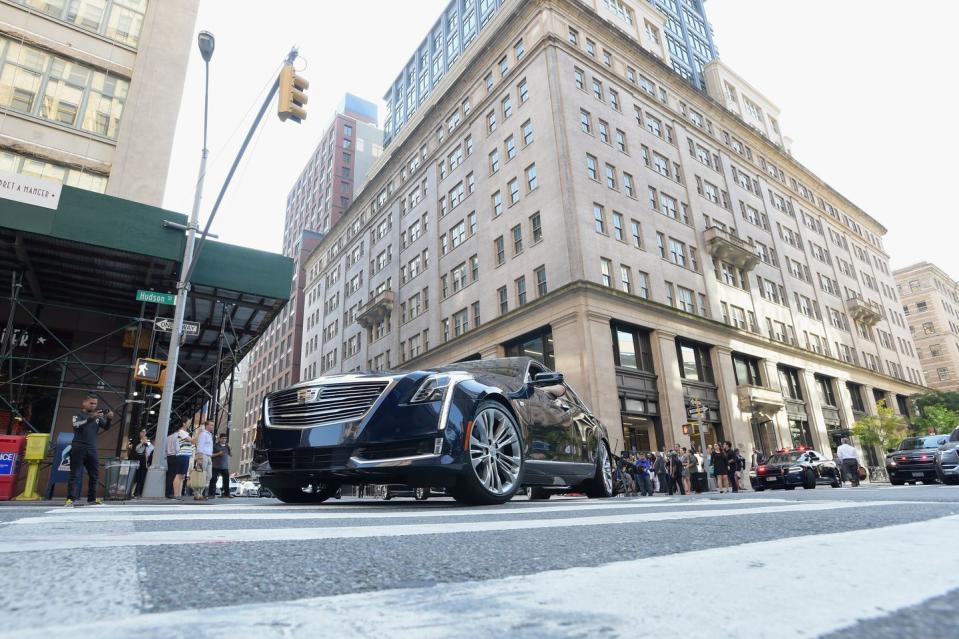
So what took so long? Maiorana said GM faced daunting challenges in fusing multiple sensors from varied suppliers with high-definition onboard Lidar mapping and software, all to get dead-accurate images.
The first, notorious fatal Autopilot crash in 2016 — in which a Tesla failed to spot the broad side of a blueberry-hauling semi — changed the equation again. Consumer Reports urged Tesla to disable Autopilot. GM took more heat when CEO Mary Barra announced the company would “step back” and delay Super Cruise’s planned debut on the Cadillac CT6 to 2017. Pressed for answers, Mark Reuss, GM’s global product chief, said, “It’ll be ready when it’s ready.”
Ditman recalls the intense scrutiny: “It all came back to, ‘Was the system ready to deploy to customers in a way that inspired confidence to let go of that steering wheel? That can be a difficult thing to do.”
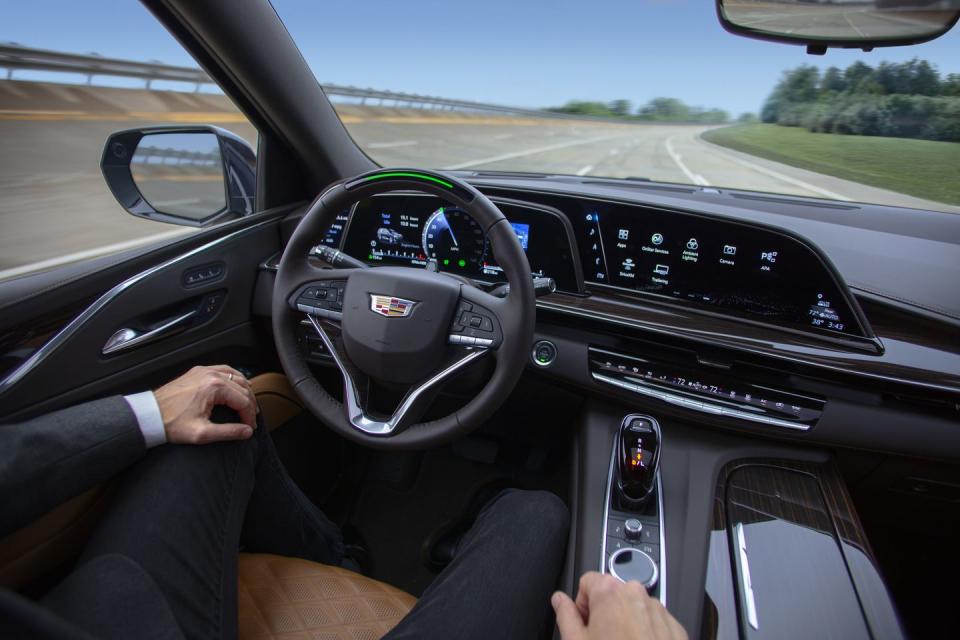
Here in 2022, GM’s caution has been vindicated, though the company has remained stingy in offering Super Cruise throughout its lineup. (I’d argue that, as a technological calling card and goodwill-generator, Super Cruise is potentially more valuable than a six-figure, low-volume Hummer EV).
General Motors customers have logged more than 34 million miles with Super Cruise. From my initial test in a CT6 in 2017, I can attest to that uncanny-valley aspect of trusting a robotic car. But a system that’s transparent and trustworthy imbues confidence. The latest iteration solves a major frustration with transparency, when Super Cruise would often disengage with no clue as to “why.” When the system does shut down in the Sierra Denali, the instrument cluster flashes reassuring messages: “Roadway Not Mapped,” or informing me I can’t drive hands-free in an exit lane. Ultra-accurate lane centering lets me sit back with hands crossed behind my head — I love seeing the look on other driver’s faces — while the Sierra threads the needle between semis at 75 mph.
That unerring path control is a clear differentiator versus some competing systems, including Ford’s Blue Cruise that I sampled in Texas on the F-150 Lightning. The otherwise-brilliant electric pickup often struggled to stay centered in its lane, and the system disengaged constantly, to the point that I lost faith in operating hands-free. For good reason, it turns out: Crossing an overpass on a busy San Antonio freeway, the Lightning lost its way entirely. The pickup crossed a lane marker and threatened to bash a concrete median, forcing me to yank the Ford back on path.
Fully automated lane changes are another new Super Cruise trick. (Drivers can still choose to use a manual turn signal to initiate a lane swap). Encountering a fast-lane dawdler in Connecticut, the Sierra checks over its brawny shoulder to make sure the lane is clear, flicks the turn signal, and executes a lane change smooth enough to satisfy a persnickety Driver’s Ed instructor. The truck sometimes slides back into its original lane, or sticks with a lane for a clearer path through traffic. It’s impressive stuff, not least in a loaded, three-ton pickup truck with restricted rearward vision.
GM just announced that later this year, Super Cruise will more than double its geofenced domain, to operate on more than 400,000 miles of North American roads. That includes two-way roads for the first time, encompassing some of America’s most epic byways, from the Pacific Coast Highway and U.S. Route 66 to the Trans-Canada Highway. The idea of doing “look Ma, no-hands!” through Big Sur on the PCH, the Pacific Ocean a semi-autonomous plunge away, raises similar concerns that Tesla has faced with its expanded Autopilot. Engineers insist the system will handle it.
“We make sure the maps and sensors are capable of what we’re asking,” Maiorana says.
The more-sophisticated system will recognize intersections and road crossings, yet keep those crossings entirely in human hands: It will alert drivers and disengage at least 350 meters before an intersection. To avoid annoying disengagements, engineers envision Super Cruise handling long stretches of two-laners, shutting down in towns with closely-strung stoplights, then allowing re-engagement beyond city limits.
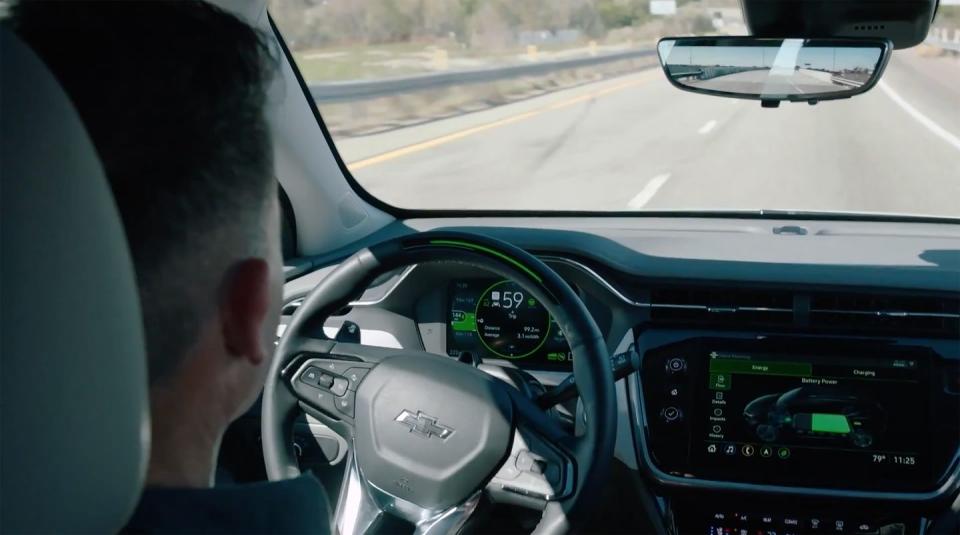
The potential game-changer is called Ultra Cruise. A bit ironically, this all-new system promises much of what Tesla has failed (so far) to deliver: Hands-free driving on every mile of paved road in North America, from 42nd Street in Manhattan to a snowbound town in Alaska. GM says the system will autonomously follow navigation routes, react to stoplights and other traffic-control devices, make 90-degree turns, support close-object avoidance and even park in residential driveways — ideally without squashing your kid’s bicycle. Diagnostic and learning systems can identify tricky driving scenarios and trigger data recordings that can GM can process to continuously improve performance.
GM says Ultra Cruise will ultimately work in 95 percent of operating scenarios. (Still waiting for the autonomous car that can handle Times Square on New Year’s Eve). GM plans to launch Ultra Cruise next year, and limit it to “premium entries” for now. The system will kick off with 2 million miles of roadways, and eventually 3.2 million miles in the U.S. and Canada.
Where Super Cruise’s vision relies on the aforementioned Lidar map scans, Ultra Cruise will use new types of multi-modal data — details to come — to create an in-house map of some of the most obscure roads and outposts in North America.
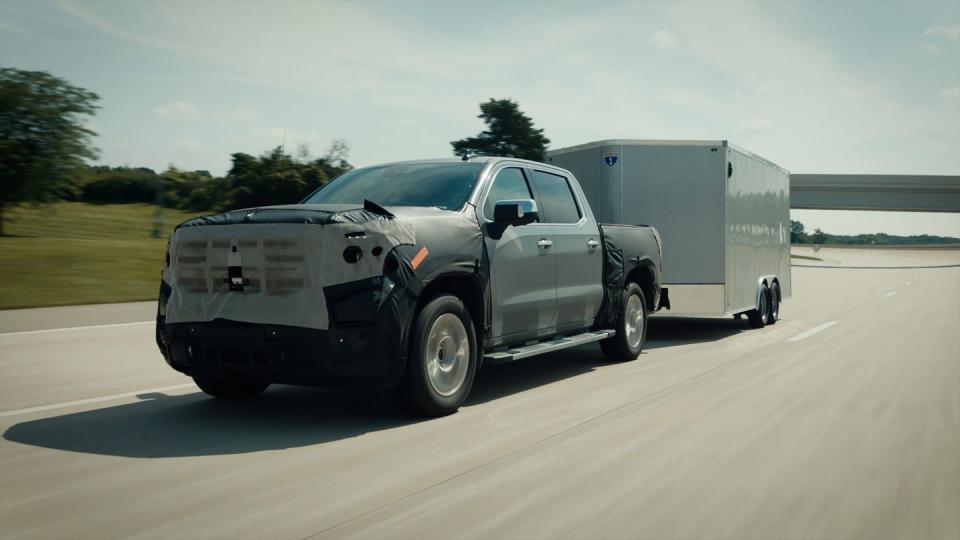
“It’s not practical to drive a (survey) vehicle with a Lidar sled on it over every possible mile of roadway; that would take forever to do,” Ditman says. Fusing all those new sensors “will let us paint a richer picture of the scene and do all the maneuvers.”
Engineers aren’t ready to divulge the full suite of Ultra Cruise sensors, but a Lidar laser scanner is among them. The system definitely requires the newfound computing might of GM’s Vehicle Intelligence Platform and Ultifi — the slick software platform that debuts next year — to work its magic. Ditman notes that early Ultra Cruise prototypes were all Escalades, because “the compute box took up the entire cargo hatch behind the second row,” and required liquid cooling and a second alternator.
Now, “it’s the size of maybe three stacked laptops for production, and air cooled.”
The system will remain geofenced, and the company can turn off sections of road if there are any concerns.
“If you think it’s hard to get someone to let go of the steering wheel on highways,” Ditman says, imagine city streets clogged with pedestrians, or a rainy country road at night.
Refreshingly, in the wake of Musk’s more-Barnumesque claims, GM underscores that even cars equipped with Ultra Cruise won’t be “autonomous” by any stretch.
This is simply a more advanced form of driver assistance, one that still requires a sentient human at all times. For full-on autonomy, GM is still counting on its Cruise division, despite $5 billion in losses since 2018 as it tries to ramp up a robotaxi business in San Francisco.
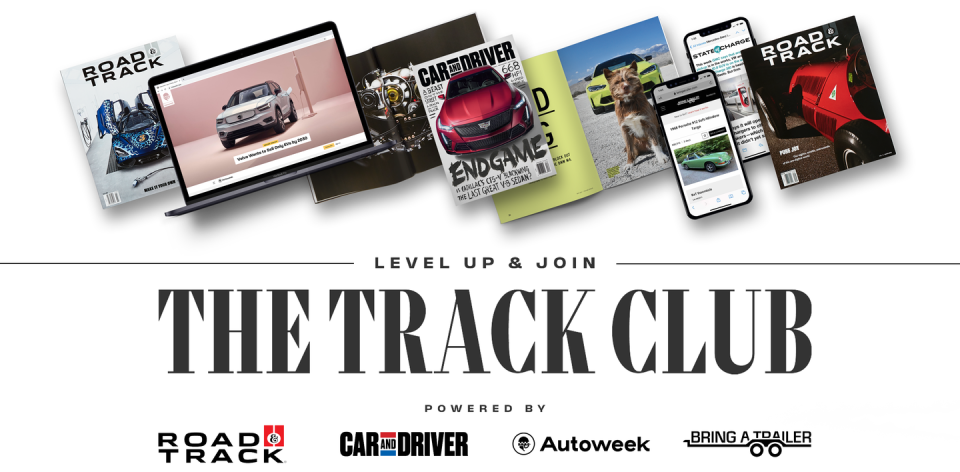
Skeptics, including some driving enthusiasts, suggest tech like SuperCruise is the answer to a question no one was asking. Asked the ultimate point — especially since drivers must keep watching the road — Maiorana says Super Cruise frees drivers from the most mundane parts of the task. Among extensive feedback from owners, he says, many insist they’d never buy another GM car without it.
“Owners feel more refreshed, they feel more relaxed, yet they are still attentive,” he says.
After letting Super Cruise do the driving for about two hours of a boring run on I-95, I concur. These systems aren’t buzzkills, nannies or evil robots, determined to replace us.
They’re a useful tool, easing the burden anywhere that driving isn’t fun or rewarding. As well know too well, that describes too many of our modern hours behind the wheel.
You Might Also Like

 Yahoo Autos
Yahoo Autos 